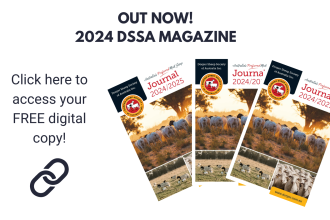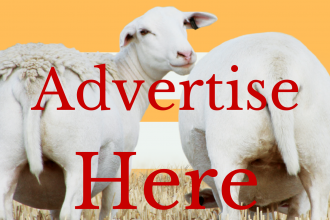ATTRIBUTES
Dorpers and White Dorpers are Australia’s preeminent low maintenance meat sheep, adapted to vast range of conditions across the country. The success of the Australian Dorper breeds in expanding the prime lamb production in Australia in barely two decades is well recognised. Dorpers and White Dorpers have also provided the genetic base for a number of new composite ‘breeds’ that seek to capitalise on the breed’s success but only Dorpers and White Dorpers have the performance and predictability, based on 80 years of breeding, to enhance the long-term profitability of the national sheep flock.
Greater profitability can be gained when breeding with the Dorper. Dorpers were bred to produce a high-quality carcass under extensive conditions. They have the reputation of rapid weight gain, excellent carcass conformation, fantastic fat distribution,are non-selective grazers and they have excellent feed conversion. With their shedding ability, they are low maintenance and do not require shearing, mulesing, crutching or tail docking. Dorpers and White Dorpers are also highly fertile very maternal producing fast growing vigorous lambs. They are polyoestrus and lambing intervals of little more than six months can be achieved and systems based on eight-month lambing intervals are common. Many breeders have noticed that the Dorpers natural pigmentation protects them from skin cancers seen in many other breeds in Australia.
Click here to read an article about a producers experience with the low maintenance breed.
ACHIEVEMENTS
In a relatively short time the Australian Dorper breeds have set a benchmark for achievement across a range of areas, including:
Rate of expansion within the industry – the rate of growth of the national Dorper flock from humble beginnings based on the introduction of embryos in 1996 numbers have grown to an estimated 2 million. This achievement in a period or little more than 20 years during which total sheep numbers have dramatically declined to well under 80 million nationwide reflects the multiple advantages of the breeds as a low maintenance lamb meat producing machine!
Prime lamb production in semi-arid lands – There has been a dramatic expansion of prime lamb production into the dryer areas of Victoria, South Australia, NSW, Queensland and Western Australia because of the ability of Australian Dorpers and White Dorpers to reliably produce prime lambs in these areas where no other breed has been able to successfully. The ability of the Australian Dorper to thrive, and produce prime lambs with very low maintenance needs has often seen Dorpers replacing merino flocks and returning viability to formerly economically marginal grazing operations. Many properties have been purchased for the very specific purpose of prime lamb production using Australian Dorpers which has seen renewed demand for properties in these areas.
Click here to read an article about Australian Dorpers ability to do well during the dry times.
Organic Lamb Production – because the Australian Dorper and White Dorper do not require shearing, crutching or fly strike control, maintenance requirements and chemical use are greatly reduced. Further in these drier areas many operators are able avoid any need for drenching for worm control and are able to satisfy the organic lamb market which often delivers a premium price as a further pay off on top of the greatly reduced maintenance costs and workload.
Read an article about an organic Australian Dorper lamb producer here.
Superior Carcass Quality – Australian Dorpers and White Dorpers produce a superior carcass and excellent meat quality. The breed has a long history of success in carcass competitions across the country.
To read an article in the Queensland Country Life on a Australian Dorper producers success at the 2018 Ekka carcase competition, click here.
Animal Welfare Benefits – the breed does not require mulesing or tail docking both associated with fly strike control. Because the Australian Dorper Breeds naturally shed their wool they are spared the distress of flystrike and the treatments to prevent flystrike. Australian Dorpers also have a natural skin pigmentation that protects them from skin cancer.
Click here to read comments in the 2018 liftout magazine on the DSSA’s proactive stance in animal welfare.
Click here to read more information about tail docking in an article published in the liftout magazine.
To read an article which includes how a farmer in Griffith has made the change not to tail dock click here.





